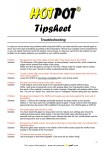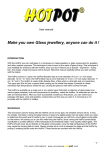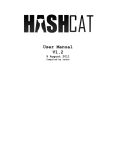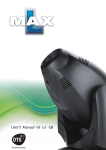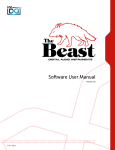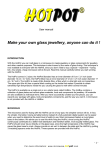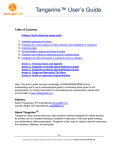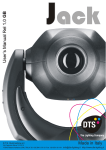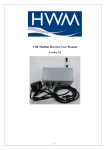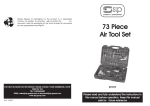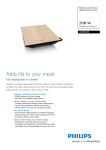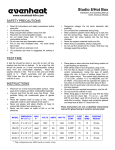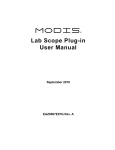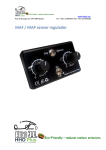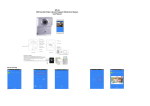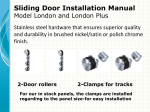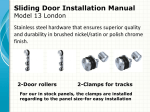Download Tipsheet: Dichro Materials
Transcript
Tipsheet Dichro slides, dichro frit and dichro glass When you make jewellery, you will probably like our dichroic material, which can give your work more colour and shine. But what is dichro? It started with dichroic glass. Manufacturers create an extremely thin layer of precious metals on their glass. The metals are in fact damped on the surface of the glass. This procedure is complicated and the metals are expensive, so no need to say that dichroic glass can be quite expensive. In daily life this glass has been given the short name “dichro”. Your HotPot supplier has a wide range of dichro glass available: Dichro slides and dichro frit are also thin layers of precious metals, but here this material is not damped onto glass, but on paper. You can use it for fusing on, or between your glass. -1For more informat ion:: www.microwave -hho ott pot .com EXAMPLE OF WORKING WITH DICHRO GLASS HotPot suppliers can offer you various colours of dichro glass. The base glass is mostly black, in some occasions it can be colourless glass. It works quite similar to the normal fusing glass. Let’s take this simple example; Cut 2 pieces of black glass as a base. Op top of that you stack all kinds of dichro glass. Fuse the whole piece in the HotPot and that’s it; a beautiful piece with bright colours of precious metals! EXAMPLE OF WORKING WITH DICHRO SLIDES At first we cut the glass in the desired shape. For a full-fuse we need 2 layers of 3 mm, to get the thickness of 6 mm (reed more about this in the user manual). We place the 2 pieces on top of each other with a little glue in between and leave it to dry. The dichro slides will later on be placed op top of this. Now we cut the dichro slides that we have chosen and put them in water. This way the dichro layer comes off of the paper. After one minute we take a piece of dichro slide out of the water. We carefully move the dichro between our fingers and the dichro separates from the paper. The dichro is now very vulnerable so place it on the glass with much caution. As long as it is wet it can still be moved around, so you don’t have to worry about placing it in the right position at once. If you have some water or air trapped under the dichro, gently push your finger on the dichro until the dichro is set neatly on the glass. Leave it to dry completely and then fuse it in the HotPot as you do with normal fusing glass. cut the dichro slide in shape put it in water leave it for a minute -2For more informat ion:: www.microwave -hho ott pot .com Move the dichro off the paper put it on the glass move it into the right position EXAMPLE OF WORKING WITH DICHRO FRIT The dichro frit is almost the same as the dichro slides. The biggest difference lies within the fact that they will not be left in water before use, these are “ready-to-use”. Because they cannot fuse together with anything if placed on top, they can only be used between 2 layers of glass. Logically, the glass on top will most commonly be transparent and colourless, to create the best visibility for the dichro frit colours. We cut 2 pieces of glass. We place some dichro frit between the 2 layers, with a small amount of glue near the edges to keep everything together while transporting it to the microwave. When the glue has dried, we fuse this piece in the HotPot as we do with normal glass. Hot-tip: Dichro slides and frit should not be fused too long or too hot, since this could burn your dichro material and leave you with white or gray ashes instead of nice colours. So be careful with your firing times. If your piece is rather big, you may prefer to fuse it in 2 separate firings, so that the glass with not get too hot at some point. dicro-slide fused on glass dicro-frit fused between glass -3For more informat ion:: www.microwave -hho ott pot .com



